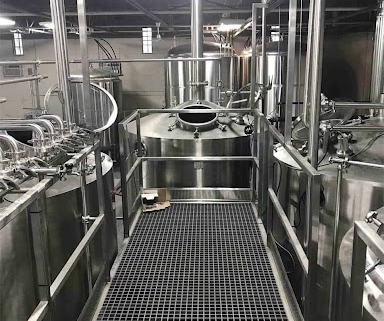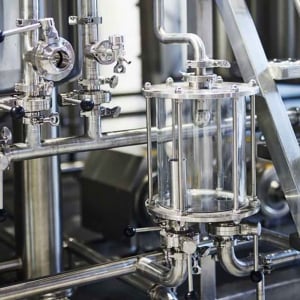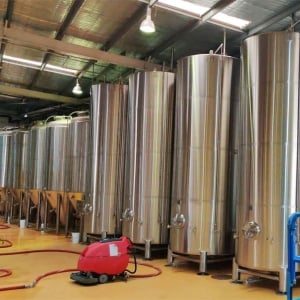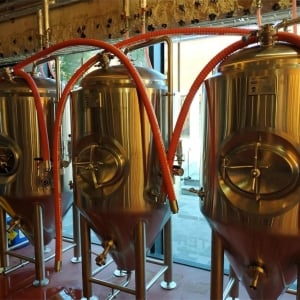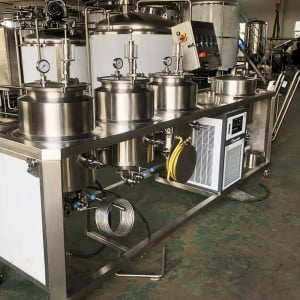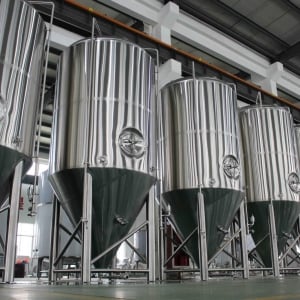Complete Brewing System
If you’re passionate about brewing beer or looking to invest in a complete brewing system, you’re in the right place. Brewing is both an art and a science that requires not just the right skills but also the proper equipment. In this guide, we will explore every aspect of a complete brewing system, from understanding the equipment to operating, maintaining, and choosing the right supplier. This will be a comprehensive, detailed, and engaging piece on everything you need to know.
Overview: What Is a Complete Brewing System?
A complete brewing system is an all-in-one solution designed to make the beer brewing process efficient, scalable, and high-quality. It includes essential equipment like kettles, fermenters, heat exchangers, and control systems to handle all stages of brewing—from mashing to fermentation to packaging.
Brewing systems come in various sizes, capacities, and configurations, making them suitable for everyone, from small homebrewers to large commercial breweries. Whether you’re just starting out or looking to upgrade, a complete brewing system streamlines the process, ensuring consistent beer production.
But before you start dreaming of that first perfect pint, let’s dive into the equipment and technical know-how you’ll need.
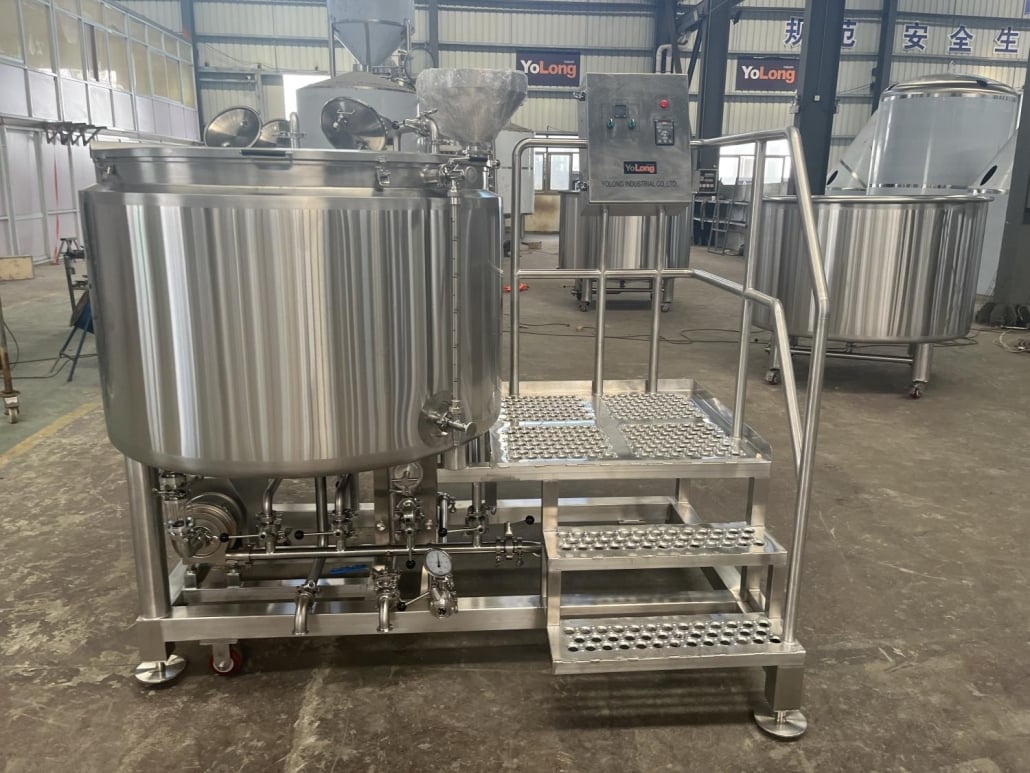
Complete Brewing System Equipment Guide
When we talk about a brewing system, we are referring to a suite of equipment, each component playing a critical role in the beer production process. Below, we’ll explore each of these essential components and their roles.
Key Equipment Components in a Complete Brewing System
- Mash Tun: This is where the process of converting starches in the malt into fermentable sugars takes place. A mash tun can have a false bottom or screens for lautering, where you separate the wort from the spent grains.
- Brew Kettle: Once the wort is created, it’s transferred to the brew kettle, where it is boiled. During this stage, hops are typically added to impart flavor and bitterness.
- Fermenter: After boiling, the wort is cooled and transferred to a fermenter, where yeast is added, and fermentation begins. Fermenters come in different shapes and sizes, from conical to cylindrical.
- Heat Exchanger: This cools the wort down rapidly after boiling, helping preserve flavor and ensuring a smooth fermentation.
- Pumps and Valves: These are essential for transferring liquids between different stages of brewing—whether it’s moving wort from the mash tun to the kettle or pumping finished beer into kegs.
- Control System: Modern brewing systems often come with a computerized control panel that helps automate temperature control, timing, and pressure regulation for consistent results.
- Cleaning System (CIP – Clean-in-Place): A crucial part of any brewing system, ensuring your equipment remains sanitary is vital for producing high-quality beer. Automated CIP systems make the cleaning process easier and more thorough.
Complete Brewing System Equipment Table
| Equipment | Function | Features to Look For | Notes |
|---|---|---|---|
| Mash Tun | Converts malt starch into fermentable sugars | Insulated, false bottom, stainless steel | Crucial for achieving precise sugar conversion |
| Brew Kettle | Boils the wort and adds hops | Proper heat distribution, whirlpool feature | Essential for flavor extraction from hops |
| Fermenter | Allows fermentation of wort into beer | Conical bottom, temperature control, pressure-rated | Fermenters can be plastic or stainless steel |
| Heat Exchanger | Cools down wort rapidly after boiling | Plate or tube style, high heat transfer efficiency | Faster cooling prevents contamination |
| Pumps and Valves | Moves liquids through the brewing process | Food-grade materials, high flow rate, durability | Critical for ease of liquid transfer between brewing steps |
| Control System | Automates and controls brewing process parameters | Programmable logic control (PLC), touch screen, multi-batch capability | Ensures consistency and reduces manual intervention |
| CIP System | Automatically cleans equipment | Automated control, multiple cleaning modes, high-temperature compatibility | Sanitation is key to high-quality beer production |
The Brewing Process: A Step-by-Step Guide
Brewing is as much about the process as it is about the ingredients. Understanding each step will help you get the most out of your complete brewing system. Let’s break down the brewing process into clear steps.
1. Mashing
The first step is mashing, where malted barley is mixed with hot water in the mash tun. The heat activates enzymes in the malt that break down the starches into sugars, which will later be fermented into alcohol.
2. Lautering
Once mashing is complete, the sugary liquid (wort) is separated from the spent grain. This process, called lautering, typically occurs in the mash tun or a separate lauter tun.
3. Boiling
The wort is then transferred to the brew kettle, where it is boiled to sterilize it and extract flavors from the hops added during this stage. Boiling also helps to concentrate the wort and improve beer stability.
4. Cooling
After boiling, the wort must be rapidly cooled to fermentation temperature. This is typically done using a heat exchanger. Rapid cooling is essential to prevent bacterial contamination and preserve the flavors.
5. Fermentation
In the fermenter, yeast is added to the cooled wort, and fermentation begins. Yeast consumes the sugars and converts them into alcohol and carbon dioxide. This stage can take anywhere from a few days to several weeks, depending on the beer style.
6. Conditioning
After fermentation, beer may be conditioned (or aged) to enhance its flavor, carbonation, and clarity. This can take place in the fermenter or secondary vessels like kegs.
7. Packaging
The final step is packaging the beer. This can be done in bottles, cans, or kegs, depending on your setup and scale of production.
Complete Brewing Process Table
| Brewing Stage | Equipment Needed | Description | Timeframe |
|---|---|---|---|
| Mashing | Mash Tun | Mixing malt with water to extract fermentable sugars | 60-90 minutes |
| Lautering | Lauter Tun or Mash Tun | Separating wort from spent grains | 30-60 minutes |
| Boiling | Brew Kettle | Sterilizing wort and extracting hop flavors | 60-90 minutes |
| Cooling | Heat Exchanger | Rapid cooling of wort to fermentation temperature | 20-30 minutes |
| Fermentation | Fermenter | Yeast converts sugars into alcohol and CO2 | 5-14 days (depending on style) |
| Conditioning | Fermenter or Keg | Enhancing flavors, carbonation, and clarity | 1-4 weeks |
| Packaging | Bottling/Kegging Machine | Filling bottles, cans, or kegs for distribution or consumption | Varies based on production |
Capacity, Space, Design, Layout, and Customization of a Complete Brewing System
When considering a brewing system, you need to think about factors like space, capacity, design, and customization options. This helps in ensuring the system fits your needs, whether you’re brewing on a small scale or for commercial purposes.
Capacity Considerations
Brewing systems are available in various sizes, typically measured in liters or barrels. Choosing the right capacity depends on your production goals.
| System Capacity | Ideal For | Pros | Cons |
|---|---|---|---|
| 50-100 Liters | Homebrewing, small batches | Affordable, space-efficient | Limited production capacity |
| 100-500 Liters | Small craft breweries | Suitable for small commercial production | Takes up more space, higher cost |
| 500-1000 Liters | Medium-sized craft breweries | Higher output, good for scaling | Requires more infrastructure |
| 1000-3000 Liters | Large commercial breweries | Mass production, high efficiency | Significant space and resource investment |
| 3000+ Liters | Large-scale industrial breweries | Best for large-scale production | Expensive, needs advanced infrastructure |
Space and Layout Considerations
Space planning is essential to ensure smooth operation and efficient workflow. Proper layout maximizes productivity and minimizes unnecessary movements or delays.
| System Size | Space Requirements | Layout Considerations |
|---|---|---|
| Small System | Fits in a garage or small room | Compact design, less spacing between equipment |
| Medium System | Requires a small dedicated room | Needs distinct areas for brewing, fermenting, and packaging |
| Large System | Needs a full facility or warehouse | Must consider ergonomics, storage, and utilities |
Design and Customization Options
When it comes to brewing systems, customization options allow you to tailor your equipment to specific needs.
| Customization | Benefits | Common Customization Options |
|---|---|---|
| Custom Design | Fits specific brewing space, processes, or capacity | Size, number of vessels, control automation, heating options |
| Modular Design | Allows for future expansion or changes in brewing process | Add/remove components like fermenters or bright tanks |
| Advanced Controls | Helps monitor and adjust brewing parameters with greater precision | Temperature control, fermentation timing, automated cleaning |
Complete Brewing System Price Range and Suppliers
Understanding the price range and suppliers of complete brewing systems is crucial for planning your investment. Prices vary depending on system capacity, materials, and customization features.
Price Range for Complete Brewing Systems
| System Size | Price Range | Features/Considerations |
|---|---|---|
| 50-100 Liters | $2,000 – $10,000 | Basic equipment, limited automation, ideal for hobbyists and homebrewers |
| 100-500 Liters | $10,000 – $50,000 | Suitable for small commercial setups, some automation available |
| 500-1000 Liters | $50,000 – $150,000 | Advanced systems with full automation, stainless steel, ideal for craft breweries |
| 1000-3000 Liters | $150,000 – $500,000 | High production capacity, fully automated, commercial-grade equipment |
| 3000+ Liters | $500,000 and above | Industrial-scale production, fully integrated systems |
Top Suppliers of Complete Brewing Systems
| Supplier Name | Location | Price Range | Key Features |
|---|---|---|---|
| BrewTech | USA | $5,000 – $300,000 | High-quality stainless steel systems, modular designs |
| Specific Mechanical | Canada | $50,000 – $500,000 | Customizable brewing solutions, advanced automation |
| Portland Kettle Works | USA | $15,000 – $400,000 | Turnkey brewing systems, superior customer service |
| Ss BrewTech | USA | $2,000 – $100,000 | Affordable, small-scale systems ideal for homebrewers |
| DME Brewing Solutions | Canada | $100,000+ | Large-scale systems, excellent durability and customization options |
How to Choose the Right Supplier for a Complete Brewing System
Selecting the right supplier is as important as choosing the right brewing system. The relationship with your supplier can affect everything from the installation process to long-term maintenance.
| Supplier Selection Criteria | Explanation |
|---|---|
| Reputation | Look for suppliers with a proven track record in brewing system installations |
| Price | Ensure the price reflects the quality and customization options offered |
| After-Sales Support | Good suppliers offer training, maintenance, and spare parts availability |
| Customization Options | Some suppliers offer more flexibility in equipment design |
| Lead Time | Factor in how long it will take to receive and install the equipment |
| Warranty and Durability | Ensure that the supplier offers a good warranty and that materials are durable |
Installation, Operation, and Maintenance of a Complete Brewing System
After selecting your brewing system, it’s essential to understand the steps for installation, daily operation, and ongoing maintenance.
Installation Process
Installation can vary based on system size and complexity, but here’s a general overview:
- Site Preparation: Ensure your space is ready for equipment setup, with the necessary utilities like water, drainage, and power in place.
- Delivery and Assembly: Equipment will be delivered in parts, requiring professional assembly to ensure everything functions correctly.
- Testing and Calibration: After installation, the system is tested for leaks, proper temperature control, and flow rates.
Operation
Operating a brewing system involves controlling various stages of the brewing process.
- Mashing and Boiling: Start by filling the mash tun with malt and water. Once the mash is complete, transfer the wort to the kettle for boiling.
- Fermentation: After cooling the wort, move it to the fermenter and add yeast to start fermentation.
- Monitoring: Throughout the process, monitor temperature, pressure, and time to ensure everything is running smoothly.
Maintenance Guidelines
Keeping your system well-maintained is critical for longevity and consistent beer quality.
| Maintenance Task | Frequency | Notes |
|---|---|---|
| Cleaning (CIP system) | After every brew | Use appropriate cleaning agents to remove residue and sanitize equipment |
| Inspect pumps and valves | Monthly | Check for wear and tear, replace if necessary |
| Temperature Calibration | Every 6 months | Ensure accurate temperature readings for each stage |
| Lubricate moving parts | Quarterly | Reduces friction and prolongs equipment life |
| Inspect electrical components | Annually | Ensure control systems are functioning without faults |
Advantages and Disadvantages of Complete Brewing Systems
It’s important to weigh the pros and cons when considering a complete brewing system for your brewery or home setup.
Advantages of a Complete Brewing System
- Efficiency: A complete brewing system streamlines the brewing process by integrating various stages, saving time and reducing labor costs.
- Consistency: Automation and control systems help maintain consistent quality across batches.
- Scalability: Many systems are modular, meaning you can add components as your production needs grow.
- Customization: From homebrewing to industrial production, there’s a system size and configuration for everyone.
Disadvantages of a Complete Brewing System
- Initial Cost: Complete systems, especially those with automation, can be expensive upfront.
- Space Requirements: Even small systems require a dedicated space for setup and operation.
- Maintenance Complexity: More advanced systems with automation can require specialized knowledge for maintenance and repair.
Comparison Table: Advantages vs. Disadvantages
| Feature | Advantage | Disadvantage |
|---|---|---|
| Efficiency | Speeds up brewing processes | Higher energy consumption |
| Consistency | Automation ensures uniform results | May require skilled labor to operate advanced controls |
| Scalability | Ability to expand production as needed | Expanding requires additional investment |
| Customization | Tailored systems for specific needs | Custom designs may increase lead times and costs |
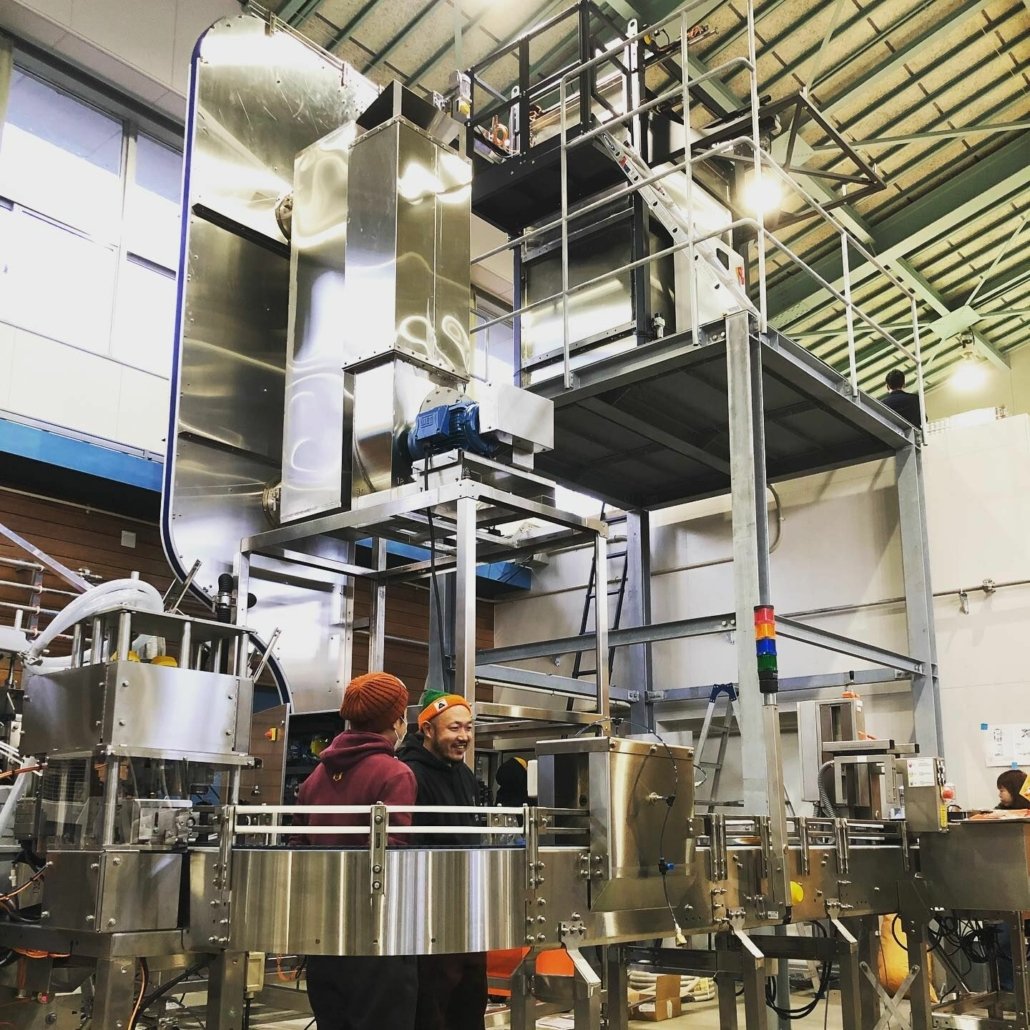
FAQ
| Question | Answer |
|---|---|
| What is the ideal size for a homebrewing system? | A 50-100 liter system is ideal for homebrewing, providing enough capacity for small batches. |
| How much space do I need for a complete brewing system? | This depends on the system size, but a small system can fit in a garage or small room. |
| How do I maintain my brewing system? | Regular cleaning, lubrication, and inspection of components like pumps, valves, and control systems. |
| What is the typical lead time for a brewing system? | Lead times vary by supplier but can range from a few weeks to several months for custom systems. |
| Can I automate my brewing process? | Yes, many modern brewing systems come with control panels for automation, ensuring consistency and ease. |
| What is the lifespan of a brewing system? | With proper maintenance, a high-quality brewing system can last 10-20 years or more. |
By now, you should have a comprehensive understanding of what a complete brewing system entails—from equipment and suppliers to installation, operation, and maintenance. Whether you’re looking to start small or scale big, investing in the right brewing system will ensure that your beer is crafted with quality and efficiency at every step.

